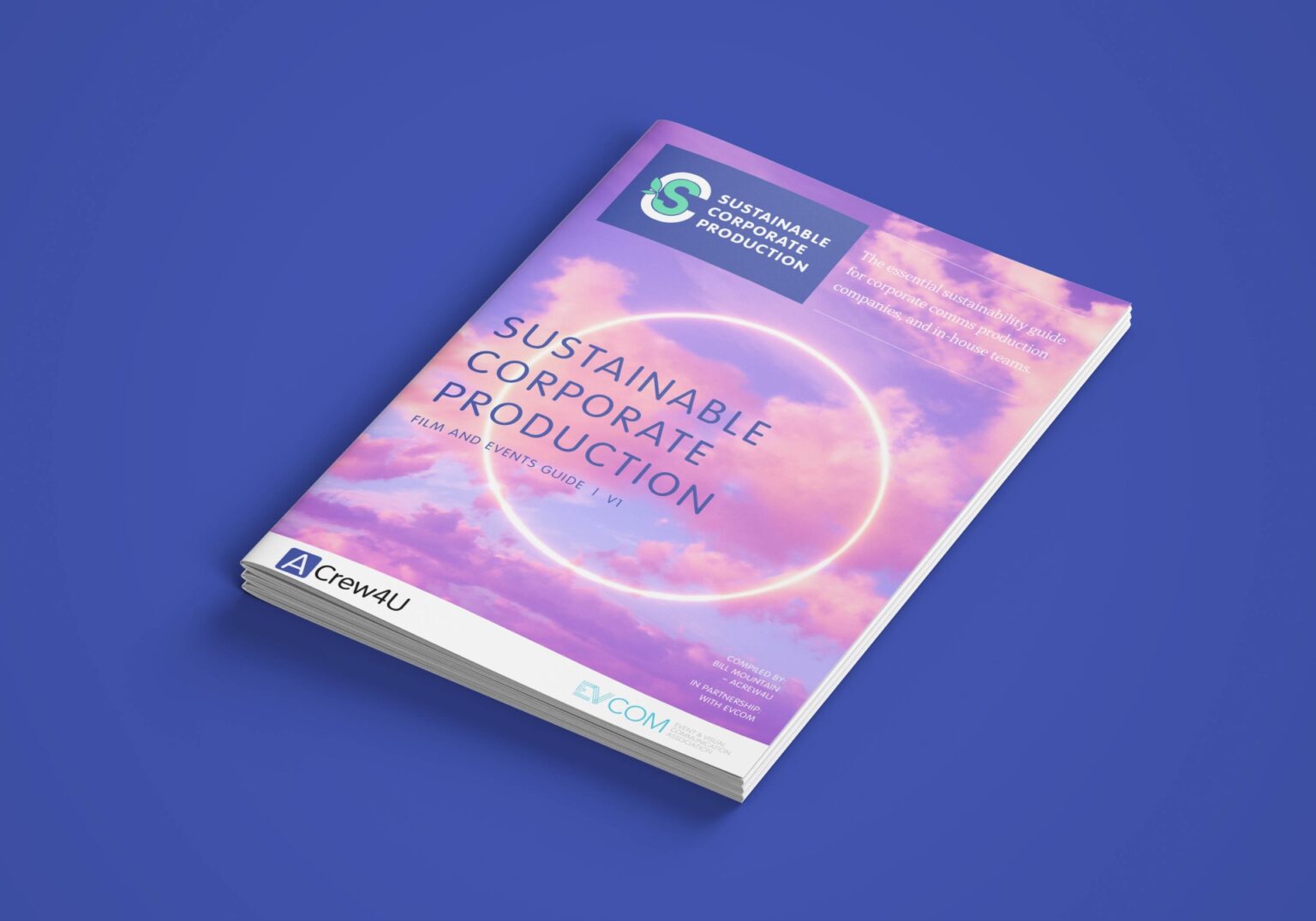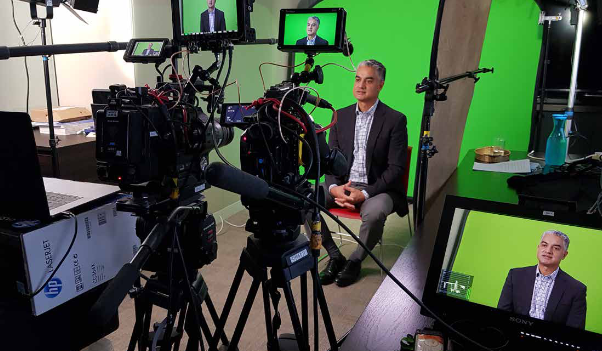By Bill Mountain (ACrew4U)
EVCOM are proud to have partnered with Bill Mountain (Acrew4U) to produce a Sustainable Corporate Production Guide, which aims to take sustainability from the abstract to the practical. The report provides ‘how to’s’, workbooks, case studies, further reading and training modules and is free to download here.
Before we can reduce impacts, we need to understand what they are, says Bill in this extract of the guide. And the good news is you don’t need to be a climate scientist to do that.
How do productions consume resources?
Imagine you’re producing a simple corporate film. Let’s have a walk through what needs to be done.
Before you start shooting you need to work with other people and pre produce and do location scouting etc. Also think about the script. During the shoot you need to get people and stuff to and from location. Then feed and accommodate them, if you are to avoid mutiny on set. On location you need to have equipment, and power for it. Maybe also props, costumes and do some building and decoration work.
After it’s all done, you then need to take it all apart, send everyone home, put the location back to how it was when you got there and chuck stuff away. Oh yes, and someone’s got to edit it, and everyone’s going to stick their oar in regarding revisions.
All these things have an environmental impact.
Action, Man
We can look at these drivers of emissions on a project in a more structured way by sorting activities into one of the below so-called “action areas”. Let’s have a quick peek at each of them…
The 4 Action areas of production
- TRANSPORT
Getting to location and back. Trains, planes and automobiles… even helicopters and boats. And not just for people – for product and props, too
- SPACES
Power for the people, and their kit. This includes power for all the (home) offices, locations, studios and accommodation involved in a project, and the energy needed to run and charge equipment in them
- MATERIALS
From food to file storage, you’d be amazed at what you use. Set construction right down to paper, and all the water, drives, catering, batteries, costume and makeup in between.
- DISPOSAL
Once you’re done with it, what do you do with it? Recycling, composting and energy recovery.
The carbon footprint of a shoot
Now we have covered the action areas, let’s put them into action!
It’s time to look at a “real” shoot that we can run through a climate calculator to help us see what activities create what impacts. Picture a corporate shoot in Frankfurt. We’ve got a director, a producer, a DoP and a sound recordist travelling from London with gear to film a senior exec talking about research and development in an office. It’s not a Spielberg epic but we’ve all got to make a living.
Someone from the client side is travelling from London and someone else from the location will chaperone us. After we get the interview filmed we will get some B Roll shot of the R and D facility. The team need to fly out the night before, they will stay in a hotel and take a plane back to London at the end of the shooting day. They will need to eat and drink. We might have a mutiny otherwise! We’re making a 5 minute video. So let’s allow a week of pre and post prod time for our producer, a day for our director and a couple of weeks for our editor.
Can you guess what the biggest drivers of emissions will be? Think about our activity areas of Transport, Spaces, Materials and Disposal.
Computer says ‘CO’
Let’s crunch some numbers. Let’s run the above through a carbon calculator. So “computer says” 2.45 tonnes of carbon dioxide. Where’s it all coming from? We can sort the emissions into action areas.
Transport
Transport – Total 1.50 Tonnes CO2 emitted
Spaces
Work Spaces – Total 0.03 Tonnes CO2 emitted
Filming Spaces – Total 0.63 Tonnes CO2 emitted
Accommodation – Total 0.12 Tonnes CO2 emitted
Post Production – Total 0.06 Tonnes CO2 emitted
Materials
Materials – Total 2.07 KGCO2 emitted
Data Storage
Data Storage – Total 0.11 Tonnes CO2 emitted
As we can see, travel is the biggest by a massive margin. So it looks like reducing transport needs may have the biggest impact on emissions, then energy needs for spaces, then materials, and finally disposal.
“OK. So what do I do then?” you ask. Download the full report here, to look int detail at where carbon dioxide numbers come from and what you can do with them.



